
The Mad Agriculture Journal
Vaca Vieja
Published on
July 18, 2024
Interview and Photos by
Jonnah Perkins
A Conversation with Bryan Dayton
On a sunny afternoon in February, Director of Mad! Media, Jonnah Perkins, sat down with Bryan Dayton in the dining room of Corrida, his Boulder, Colorado Spanish-inspired steakhouse. Corrida is known not only for its pristine view of the Boulder Flatirons but also for its opulent menu centered around celebrating beef culture. Bryan may be the face of fine dining in Boulder but at the heart of his business model is the unending drive to get higher prices for ranchers while building a beef supply chain that operates outside of the global beef commodity system. We learned why Bryan is always on the lookout for old cows and why his sourcing process is as much of a philosophy as a business transaction. Since there is no playbook, Bryan’s beef sourcing starts and ends with knowing his ranching partners personally and always coming back to the core understanding that cattle are part of ecological regeneration.
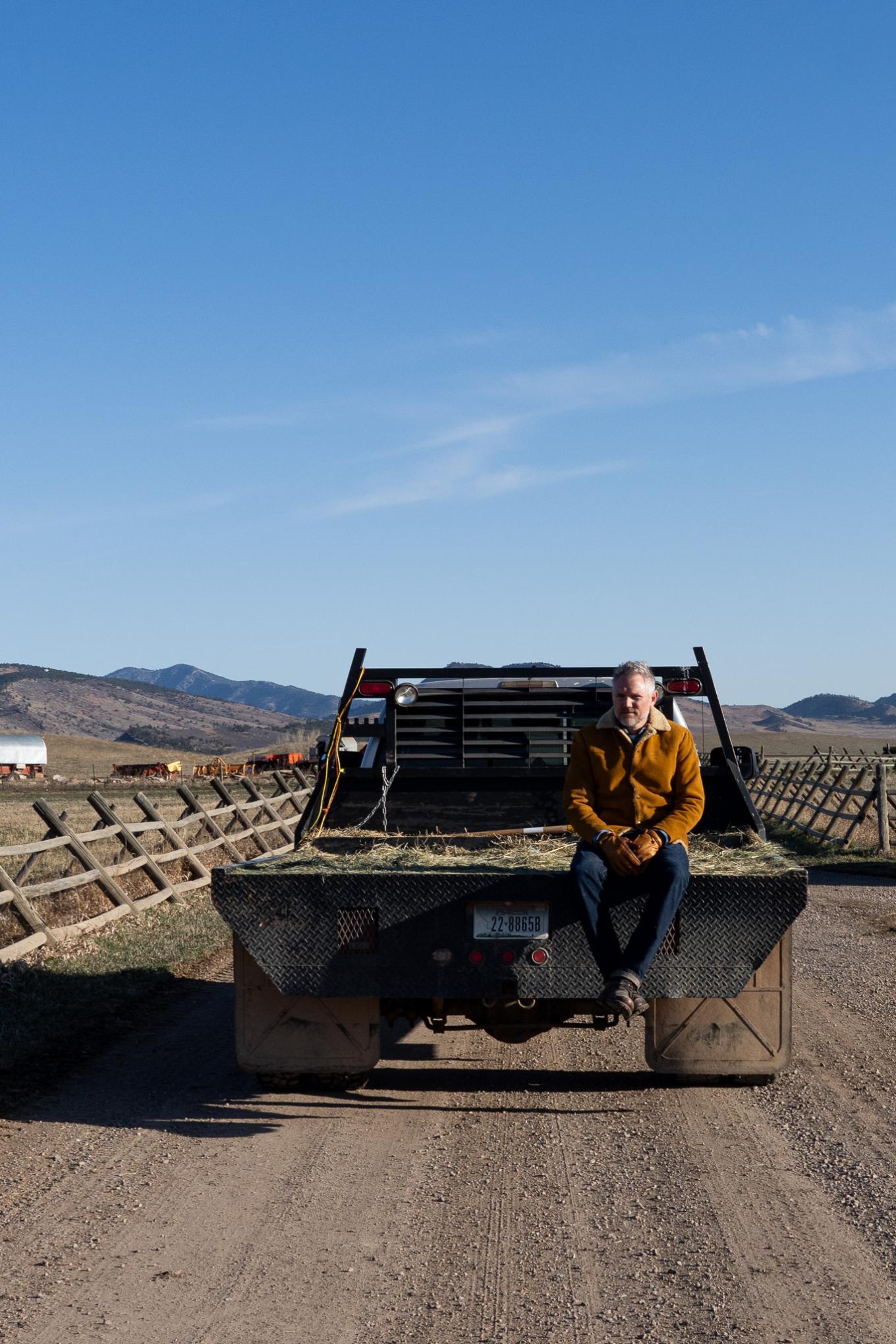
Jonnah:
I’d like to start with where we are right now. We’re sitting in this dining room and out of the window behind you, I can see the Flatirons. It’s so beautiful. How did you get here?
Bryan:
Honestly, I turned down this space three different times, and didn’t even want to look at it. Then, the person that built the space was like, “Hey, why don’t you come take a look at it?” It was a brand new build. Where we’re sitting right now was just a platform. Once we climbed the ladder and I got up here, I looked around and I could see the vision.
I knew I wanted to do a steak restaurant when we looked at the space. There wasn’t a great steak restaurant in Boulder at that time. Over the past two decades, I’ve been spending a lot of time in Spain. One of my best friends lives there, and I fell in love with the Spanish beef culture and I knew a decent amount about the beef culture here. What really inspired me was the connection between the American West and the Iberian Peninsula.
Spaniards brought all the horses and all the cows to the North American continent. We could tie that into our American heritage. There’s so much American history in the cattle industry. Cattle literally changed the landscape of the American West.
Jonnah:
I know that you have a personal background in ranching from some time you spent in Idaho. What was that experience like?
Bryan:
It was a lot of hard work. I grew up in middle Tennessee. Through my mom’s relationship with Tennessee walking horses, I got connected with some ranchers out west which is where I wanted to be. I was really into climbing, running – all that mountain stuff. I was looking for a reason to get out west at that point. I called up the rancher and I got a job basically moving a lot of irrigation pipe and doing a lot of fencing. We’d move the cattle every 21 or 22 days on different deeds on National Forests.
So that was a full-blown experience. There were only two hired hands. It was me and this one dude, Marty. I did it from ages 18 to 21, off and on seasonally, but nine months at a time. It was super wild and cool.
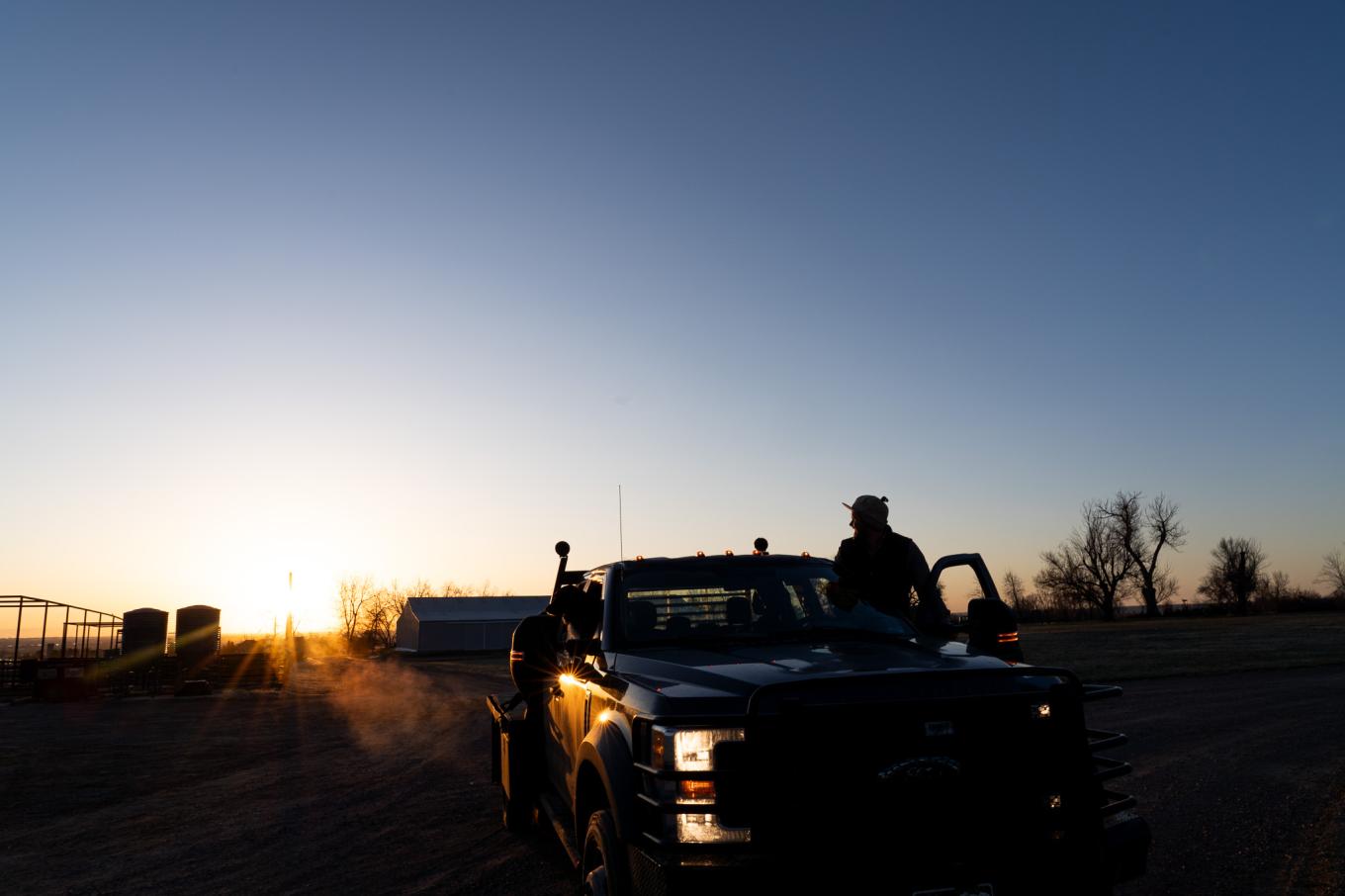
Jonnah:
Do you feel like that shaped your perspective or worldview on beef?
Bryan:
Absolutely. That’s one of the reasons Corrida works to bring a better dollar to the rancher. We really want to change the fact that American ranchers barely make any money in the process at all. The packer and processors make all the money. We constantly ask ourselves how we can fight for the little guys and really do something that’s better for Mother Nature. It’s very hard. It’s a game of David and Goliath.
Jonnah:
Can you paint a picture of what the conventional commodity beef supply chain looks like?
Bryan:
JBS owns 86% of the beef market worldwide. When you see the power of what JBS can do we could talk about everything that’s bad about it. Then we could also talk about some good things that happen through mass production in beef.
Obviously, slash and burn techniques that we see down in South America for grazing is not something anyone should support. On the other hand, JBS and other large companies that have worked with Temple Grandin to become more gentle in the harvesting process is something that’s done really well on a large scale.
Most commodity beef goes into the mass market at 14 to 16 months – it’s called cow-calf operations. This means that they have a cow, she is with her calves for seven to eight months after birth. Then they go into a feed market or a feedlot. Then they’re going to spend another seven to nine months there before they go to harvest. That beef goes into the national beef supply chain.
So you’re harvesting beef anywhere from 18 to 22 months. Through USDA regulations, they won’t let you harvest over three years old. In my mind, you’re taking a really young animal, harvesting the young animal that hasn’t had much of a life, and putting it right into the food system. With mainstream beef, over 90% of the beef that we eat is produced like that.
Jonnah:
How is what you’re doing different and how do you want to continue making it even more into your vision?
Bryan:
We are constantly asking ourselves, “How can we make the world a better place?” Working with ranchers that share our same vision of regeneration through grazing is our overall goal. Sometimes that’s super difficult because it’s hard for the way restaurants work, the way that ranchers work, the way that packers work, and the way that the butchers work. The whole thing is maddening once we start pulling the layers back. But really, all the ranchers that we’re working with are either using regenerative practices or are certified through Regenified or Savory Institute’s Land to Market program.
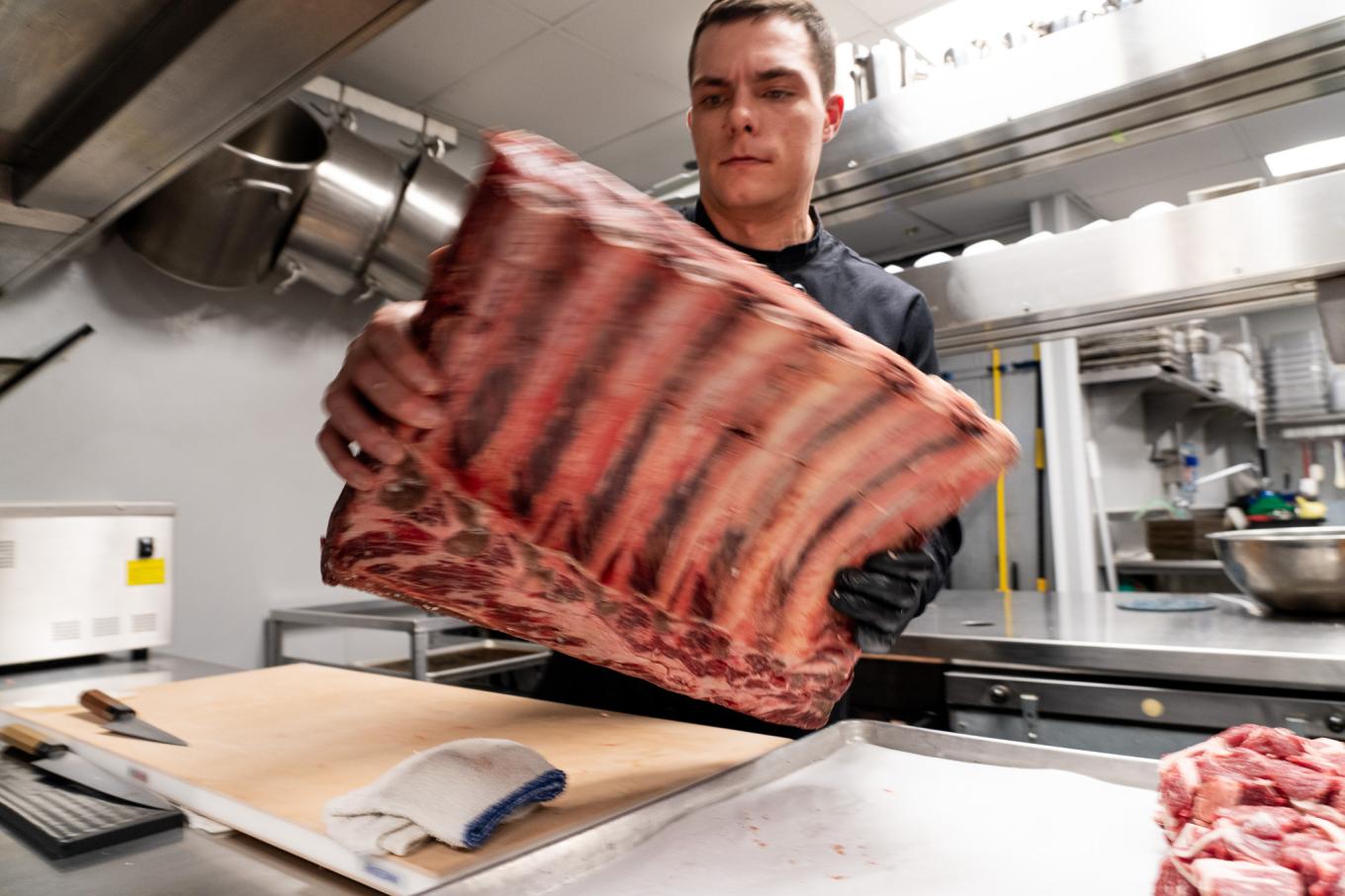
Jonnah:
In the restaurant industry, I know that restaurants are really forced into consolidation of suppliers. I’m sure you’re constantly pushing back against this as you continue to work with a lot of different ranchers. How do you find the bandwidth to have a relationship with each ranch and meet them where they’re at in terms of availability and price and all the different complications that come with ranching? It sounds like pushing a boulder up a hill.
Bryan:
We are constantly pushing the boulder up the hill. The problem is if you look at the way a chef sees things most restaurants don’t break down big racks of beef. What we want to do as our next step is build our own beef company and sell to other restaurants. Maybe a restaurant might break down a filet or tenderloin. A lot of restaurants don’t even like that. If you look at most steak restaurant menus, it’s always 12 ounces, 16 ounces, 18 ounces. You’re talking about a product that’s always that size and that weight, which is crazy to me because we all understand Mother Nature. Nature doesn’t care about ounces.
What packing houses are doing is cutting it inside and putting it in single serve, single use, and that goes to the restaurant. A lot of chefs like that because it’s always the same. It’s always easy. It’s easy to train the staff. You know what your numbers are going to be inside the restaurant to make your food costs.
At Corrida, what we’re trying to do is really maximize how much we can get from the animal by breaking down our own beef, buying the full racks, buying the full loins, and breaking down those bigger pieces ourselves. It is a challenge all the time. The weights are constantly changing. It’s not super consistent but it brings a simplicity to what we are doing. Our challenge for us in moving forward is, how can we bring some of that simplicity to the market and really make everybody’s life easier in the restaurants?
Going back to those big supply chains, it’s easy to get beef from them, easy to get those numbers, it comes in a box, already sous vide, ready to go. Versus when we’re dealing with these smaller packers, we’re talking to a mom and pop operation dealing with a rancher. They’re not only harvesting their animals themselves, but then they’re butchering and then they’re shipping it to us. So there’s a lot lost in translation.
It’s definitely, like you said, pushing the boulder up the hill. It’s pretty fascinating to me and my Chef Partner, Samuel McCandless, that we know as much about the industry as we do being like, “Hey, we’re restaurant dudes,” but now we can talk about crazy things inside the beef industry, which is actually super fun.
Jonnah:
Beef, and all animals and all plants, they’re biological products. The restaurant space and the food system in general wants them to be like Legos that fit together in this perfect way. Nature just doesn’t create that system. When you’re bringing in staff in the kitchen who probably have been trained in that mindset of consistency, how do you teach the mentality of consistency within inconsistency?
Bryan:
It’s a lot of leadership from Chef, obviously, and seeing who’s really all about it. It’s just about having that gentle education push on it and being like, “Hey, this is how we do things here.” It’s ingrained in our culture at Corrida and how we continue to evolve.
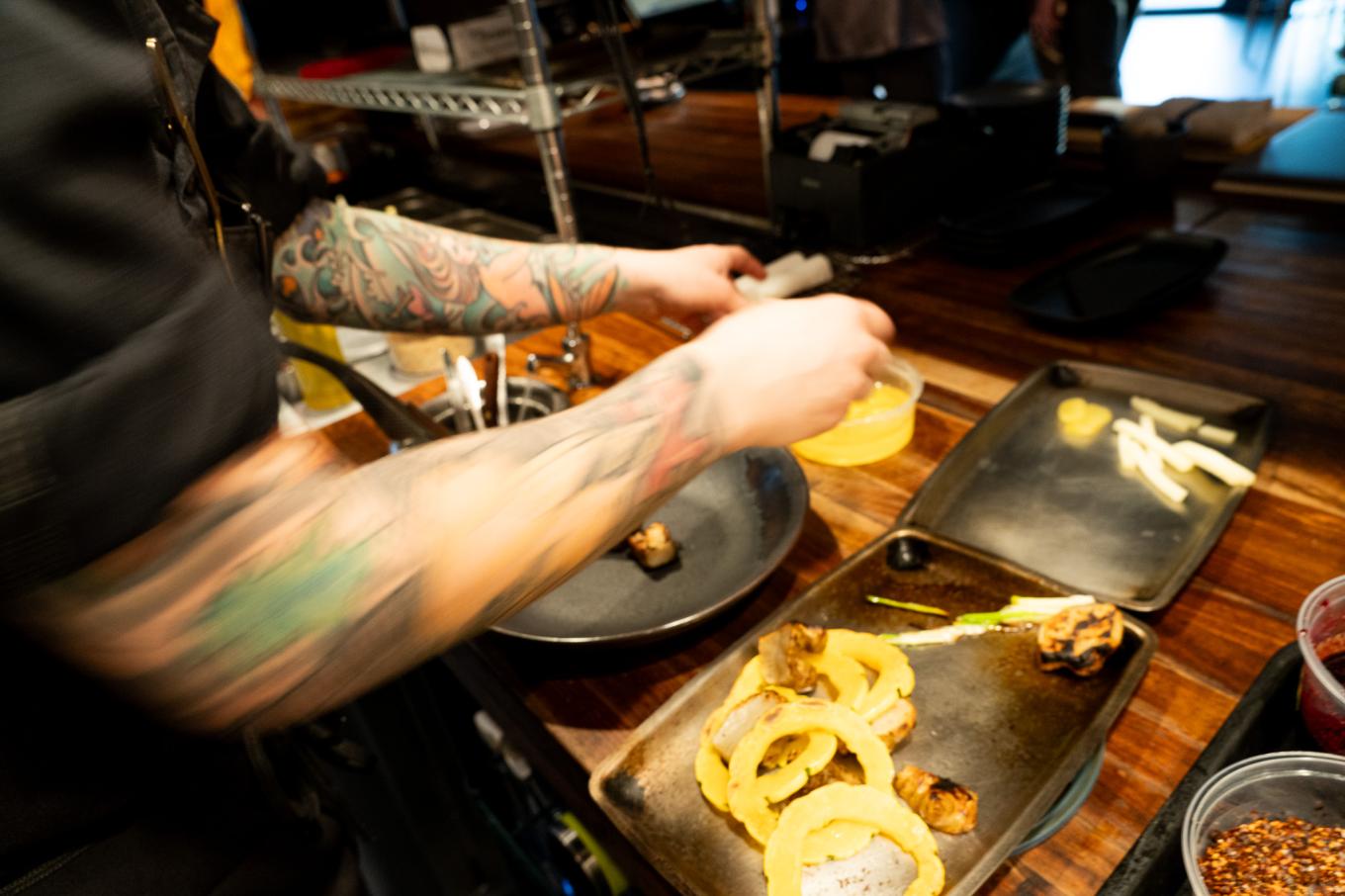
Jonnah:
You’ve been talking about beef culture and taking the inspiration from your time in Spain, and building this whole concept around it. I want to hear about what beef culture is for someone who doesn’t know. Either in Spain and the US. How are you part of shaping it?
Bryan:
Absolutely. I think beef culture is like everything else –it can be what you idolize as the American West, the Marlboro man, Yellowstone, Kevin Costner, or Clint Eastwood and it can be how we choose to steward our landscapes.
I see beef as a necessary thing for Mother Earth –whether we eat it or not. The hooved animals, in my opinion, need to be on the planet. But species have been created and died since the beginning of Earth. At the end of the day, Mother Earth’s going to be fine. Maybe we’ll go away, but she’s going to be fine. I know that another eight billion years from now it’ll be true and it’s okay. We’re just a small blip on that.
Culture, to me, is really about what’s the best thing for Mother Earth and coming back to that. What’s the best thing for your body? How can we de-industrialize our food system? We call it the beef industry because it is an industry. The stock market was created because of the beef industry. Which is insane if you look at how the beef industry shaped the United States and then globally the impact it’s had. It has really changed the world. For example, Henry Ford went to a kill floor in Chicago, saw how they were harvesting beef and he was like, “This is how we’re going to build cars.” It literally shaped the way America was built.
So to me, beef culture is about respecting what we’re eating and the ranchers raising cattle. The global culture for beef comes down to asking how many degrees of separation you have from the animals and farmers feeding you.
That’s what I find the culture to be and that’s really what we’re trying to change here at Corrida – and what we want to use our platform to talk about. In Spain you see an old cow, an old ox, something you just don’t see in the United States very much. If you let Mother Nature do what Mother Nature likes to do, she will give you the results that you want. In our current framework of harvesting young cows, we’re always trying to speed up marbling through mass production by feeding them corn in the short amount of time while they’re youthful because they’re able to put on pounds faster. You feed them a bunch of sugar, it gets fat, you get marbling, it tastes great. It’s a pretty consistent product at the end, and goes into the market.
Whereas, if you let an ox live eight, nine, 10 years out in a field eating grass, doing what it does, it gets naturally fat. That’s really where my passion lies in, “We can let Mother Nature do what was intended and we get the same product.” Do we have to invest more time? Do we have to invest more money? Yeah, all that stuff. Are we ever going to change in the United States? No way. That’s why it’s so prized when you go to Europe. It doesn’t matter if you’re in Copenhagen, London, Madrid. It’s a really beautiful thing to see these animals being prized.
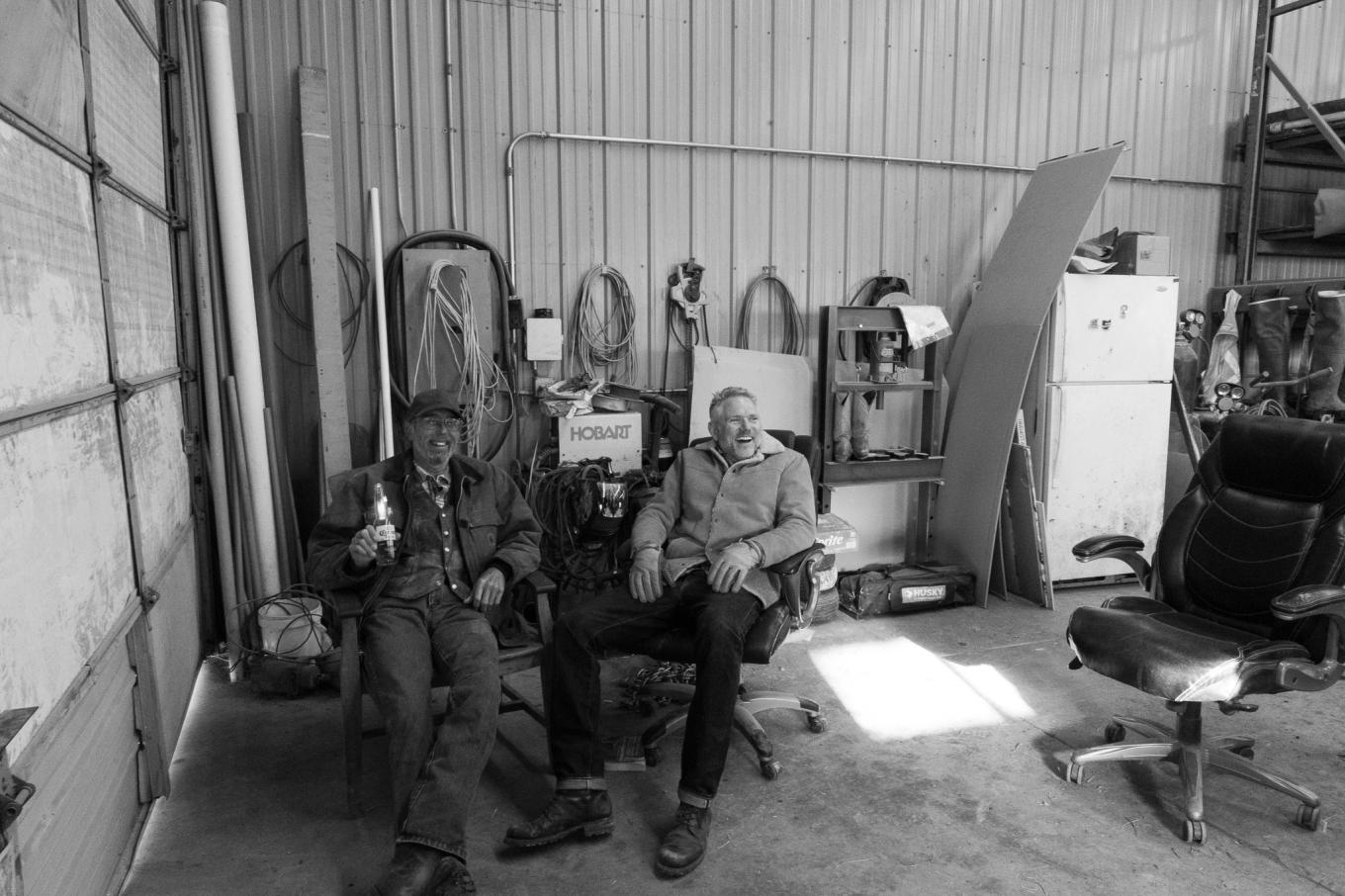
Jonnah:
Not to put economics onto it, but it’d be interesting to do the calculus on this. You invest the time to build that whole skeletal structure, which is a tremendous amount of energy that the animal has to put out. Then, if you harvest it right away once it’s at weight, then you’re left with this huge amount of bone, which has value, too. But if you leave the animal on grass and let it continue to improve the ecosystem, it’s already built its framework and it’s going to continue becoming more interesting as it ages. It is a luxury item, but it would be cool if it was seen as a tool for regeneration, and as a more interesting piece of food.
Bryan:
Absolutely. Unfortunately, everything does come back to economics. You’re telling the rancher, “Hey, you need to hold onto a steer for eight years.” I have to feed it every year. I’ve got to keep the power lines away from it. I’ve got to keep all the wolves away from it. There’s just so much volatility in life in general. It’s a product that’s in a natural environment, all those things happen. It’s not safe. It’s not consistent. Money runs everything.
Jonnah:
How would you describe the flavor profile, the difference between a traditional 18-month-old steer compared to an eight year old cow?
Bryan:
Traditionally, these older ones are grass fed their whole lives. The taste can sometimes be a bit more complex and richer. I’ve been very fortunate to eat a lot of oxen that is super tender and amazing. It depends on where it’s raised, too, because if it’s eaten all grass fed, the grass in Colorado’s different from the grass in northwest Spain, so it’s a totally different terroir.
You can even see the fat caps are a bright yellow in a lot of older grass fed beef and that’s because of the chlorophyll that’s changing the fat inside. Whereas the white marbling is always happening with corn because it’s always a clean, consistent product which is what Americans are used to. Corn-fed, corn-finished beef has a little bit of a sweeter taste to it, a little bit softer, not as that stronger “ironal” flavor that you get from older beef.
Jonnah:
But to eat grass-fed grass-finished beef versus corn-finished beef, it’s almost a different food. Grass-finished can be too intense for some people. I think it’s very smart of you to recognize that we need to ease into it. It’s a much more likely outcome for change to actually happen.
Bryan:
I already know we’re in a game we’re not going to win. We’re bringing in a bunch of the James Ranch beef that is grass-fed grass-finished and we’re going to do a side by side taste test to see if people can identify grass-fed/finished, and corn-finished. So I think there’s ways that you can play around with the grass-corn conversation in a fun way.
I’m really working on how we can get the consumer going, “Oh, okay. Beef is cool and interesting.” We are fortunate here in Boulder that finally people are coming to see us that we do beef differently. Somebody the other day graduated with a regenerative agriculture degree. They just stopped in and they were like, “Hey, is this the regenerative ranching restaurant?” It was a great conversation. Because we do have a big ranching community in the state of Colorado, we start to get some of those cowboys in, or people that work for JBS. They’ll come in and say, “Hey, I want to try that.” It’s a cool feeling.
Can we change the world? I hope so, but I don’t know. I try to be realistic, too. Can we keep moving the needle? Absolutely.